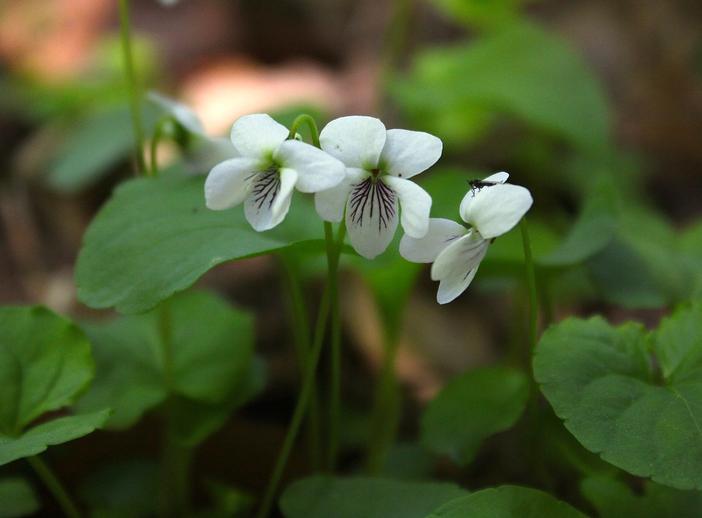Sweet White Violet
(Viola blanda)
Sweet White Violet (Viola blanda)
/
/

Under the same moon...
CC BY 2.0
Image By:
Under the same moon...
Recorded By:
Copyright:
CC BY 2.0
Copyright Notice:
Photo by: Under the same moon... | License Type: CC BY 2.0 | License URL: https://creativecommons.org/licenses/by/2.0/ | Uploader: Under the same moon... | Publisher: Flickr





































































Estimated Native Range
Summary
Viola blanda, commonly known as Sweet White Violet, is a deciduous perennial herb native to the cool, moist, deciduous forests of Eastern North America. It typically grows 6 to 12 inches high and forms low, dense clumps. Sweet White Violet blooms in spring and early summer, producing delicate, small white flowers with lower petals marked by purple veins and upper petals that may twist or bend backwards. The flowers are subtly fragrant, adding a sweet scent to the garden. The plant also features reddish-tinged stalks and 1-2 inch long heart-shaped leaves with sparse hairs.
Sweet White Violet is valued for its charming flowers and ground-covering habit, making it an excellent choice for woodland gardens, shaded borders, and naturalized areas. It is also appreciated for its adaptability to climate variations, as evidenced by its ability to adjust flowering times in response to changing conditions. This violet prefers consistently moist, humus-rich soils and thrives in part shade, though it can tolerate more sun in cooler climates. It is relatively low-maintenance but benefits from regular watering during dry periods. While generally free from serious pests and diseases, it can be susceptible to leaf spots and mildew in overly wet conditions.CC BY-SA 4.0
Sweet White Violet is valued for its charming flowers and ground-covering habit, making it an excellent choice for woodland gardens, shaded borders, and naturalized areas. It is also appreciated for its adaptability to climate variations, as evidenced by its ability to adjust flowering times in response to changing conditions. This violet prefers consistently moist, humus-rich soils and thrives in part shade, though it can tolerate more sun in cooler climates. It is relatively low-maintenance but benefits from regular watering during dry periods. While generally free from serious pests and diseases, it can be susceptible to leaf spots and mildew in overly wet conditions.CC BY-SA 4.0
Plant Description
- Plant Type: Herb
- Height: 0.3-0.5 feet
- Width: 0.8-1 feet
- Growth Rate: Moderate
- Flower Color: White
- Flowering Season: Spring
- Leaf Retention: Deciduous
Growth Requirements
- Sun: Part Shade
- Water: Medium, High
- Drainage: Slow, Medium
Common Uses
Bee Garden, Border Plant, Butterfly Garden, Deer Resistant, Fragrant, Groundcover, Low Maintenance, Rock Garden
Natural Habitat
Cool, moist, deciduous forests of Eastern North America
Other Names
Common Names: Woodland-White Violet, Willdenow’s Violet, Large-Leaf White Violet, Large-Leaved White Violet, Woodland White Violet, Violette Méconnue, Violette Agréable, Violette Tapissante
Scientific Names: , Viola blanda, Viola incognita, Viola blanda var. palustriformis, Viola incognita var. forbesii, Viola leconteana, Viola blanda var. blanda, Viola alsophila, Viola blanda var. amoena, Viola incognita var. incognita
GBIF Accepted Name: Viola blanda Willd.